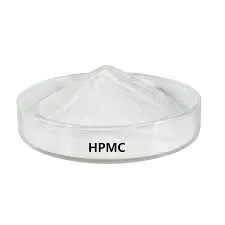
Dec . 19, 2024 08:53 Back to list
hydroxypropyl methyl cellulose hpmc
Understanding Hydroxypropyl Methylcellulose (HPMC)
Hydroxypropyl methylcellulose (HPMC) is a semi-synthetic polymer widely used in various industries, particularly in pharmaceuticals, food, and construction. Being a derivative of cellulose, HPMC is known for its versatility, non-toxic nature, and ability to form gels and films, making it a critical component in many formulations. This article will explore the properties, applications, and advantages of HPMC, emphasizing its importance in modern technology and everyday products.
Chemical Structure and Properties
HPMC is synthesized through the chemical modification of cellulose, which is a natural polysaccharide obtained from plant sources. The modification involves treating cellulose with propylene oxide and methyl chloride, which introduces hydroxypropyl and methyl groups into the cellulose structure. This modification significantly alters the solubility and thickening properties of cellulose, leading to a water-soluble polymer that is versatile for various applications.
The physical characteristics of HPMC include its appearance as a white to off-white powder that is odorless and tasteless. It dissolves in hot or cold water to form a gel-like solution. The degree of substitution of hydroxypropyl and methyl groups can be adjusted to tailor the viscosity and solubility of HPMC, which is crucial for its applications across different fields.
Applications in Pharmaceuticals
In the pharmaceutical industry, HPMC plays a pivotal role as a binder, film-forming agent, and controlled-release agent. It is commonly used in the formulation of tablets and capsules, where it helps to hold the ingredients together while also controlling the release rate of the active pharmaceutical ingredients (APIs). HPMC's ability to form gels upon hydration makes it an ideal candidate for sustained-release drug formulations, ensuring that medication is released gradually over time.
Moreover, HPMC is frequently utilized as a coating agent for tablets and pellets, providing a protective barrier that enhances stability and bioavailability. Its non-toxic nature makes it suitable for use in drug formulations intended for sensitive populations, such as children and the elderly.
Use in Food Industry
HPMC is also recognized for its applications in the food industry as a thickening agent, emulsifier, and stabilizer. It is often used in ice creams, sauces, and dressings to improve texture and prevent the separation of ingredients. In gluten-free baking, HPMC serves as a substitute for gluten, improving the elasticity and stability of dough, thereby enhancing the overall quality of gluten-free products.
hydroxypropyl methyl cellulose hpmc

One key advantage of using HPMC in food formulations is that it provides improved mouthfeel and viscosity without significantly altering the taste or appearance of the product. Additionally, being a plant-derived ingredient, HPMC aligns with increasing consumer demand for clean label products free from artificial additives.
Role in Construction
In the construction sector, HPMC is utilized as a thickening and water-retention agent in cement and gypsum-based products. It aids in improving workability and enhances the adhesive properties of mortars and tile adhesives. By increasing water retention, HPMC helps to prevent rapid drying, which can lead to cracks and other structural issues.
Furthermore, HPMC is used in wall coatings and other building materials to provide a smoother finish and improve the overall durability and performance of construction products.
Advantages of HPMC
The benefits of HPMC are numerous. Its non-toxic and biodegradable properties make it an environmentally friendly option, aligning with global sustainability efforts. Its versatility allows it to be tailored for specific applications, making it an invaluable ingredient across multiple sectors.
Moreover, HPMC's capacity to form stable, viscous solutions, coupled with its compatibility with a wide range of other excipients and ingredients, enhances its functionality and utility in various formulations.
Conclusion
In summary, hydroxypropyl methylcellulose (HPMC) is a multifunctional polymer with significant applications in pharmaceuticals, food, and construction. Its versatility, non-toxic nature, and ability to contribute to product stability and performance make HPMC an indispensable ingredient in numerous formulations. As industries continue to innovate and seek sustainable options, the importance of HPMC is likely to grow, affirming its role as a key component in modern formulations.
-
Versatile Hpmc Uses in Different Industries
NewsJun.19,2025
-
Redispersible Powder's Role in Enhancing Durability of Construction Products
NewsJun.19,2025
-
Hydroxyethyl Cellulose Applications Driving Green Industrial Processes
NewsJun.19,2025
-
Exploring Different Redispersible Polymer Powder
NewsJun.19,2025
-
Choosing the Right Mortar Bonding Agent
NewsJun.19,2025
-
Applications and Significance of China Hpmc in Modern Industries
NewsJun.19,2025







